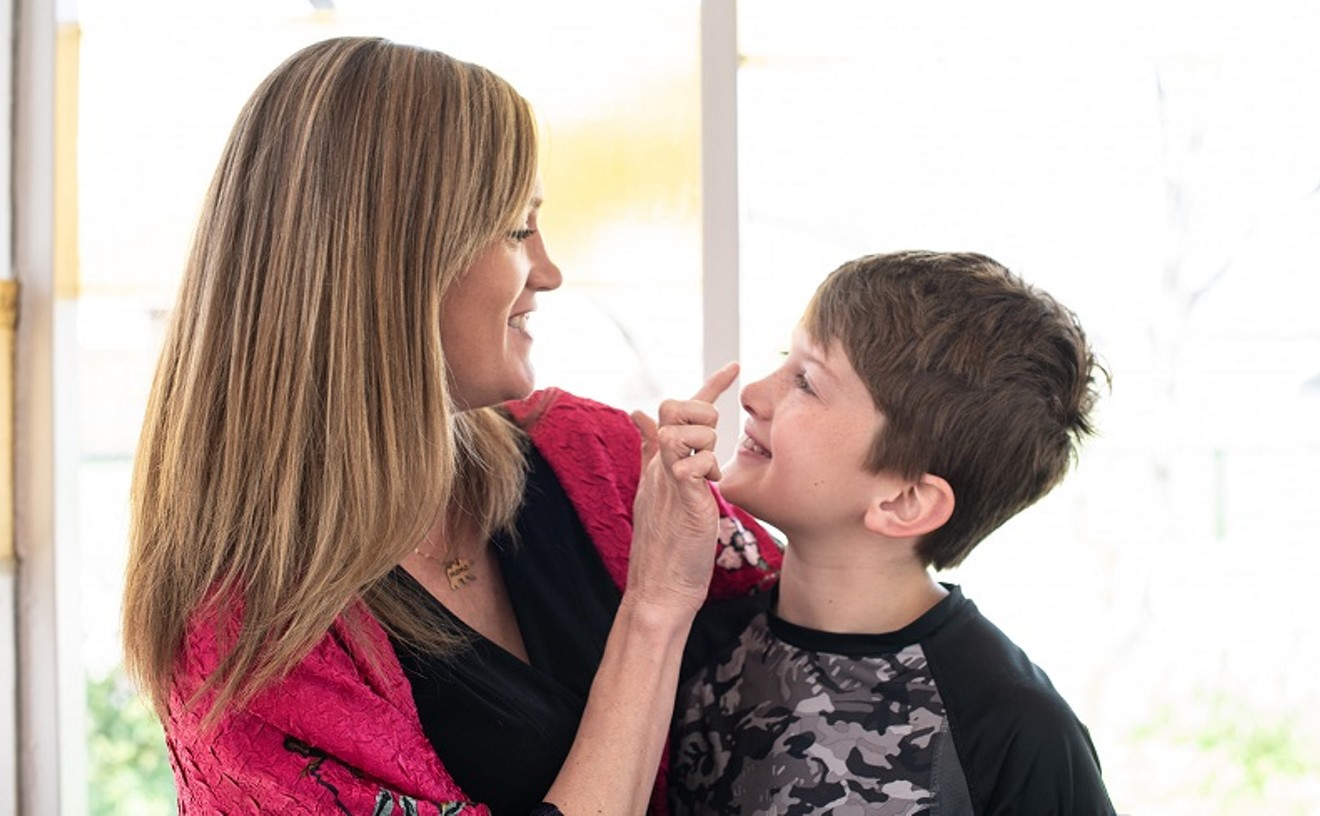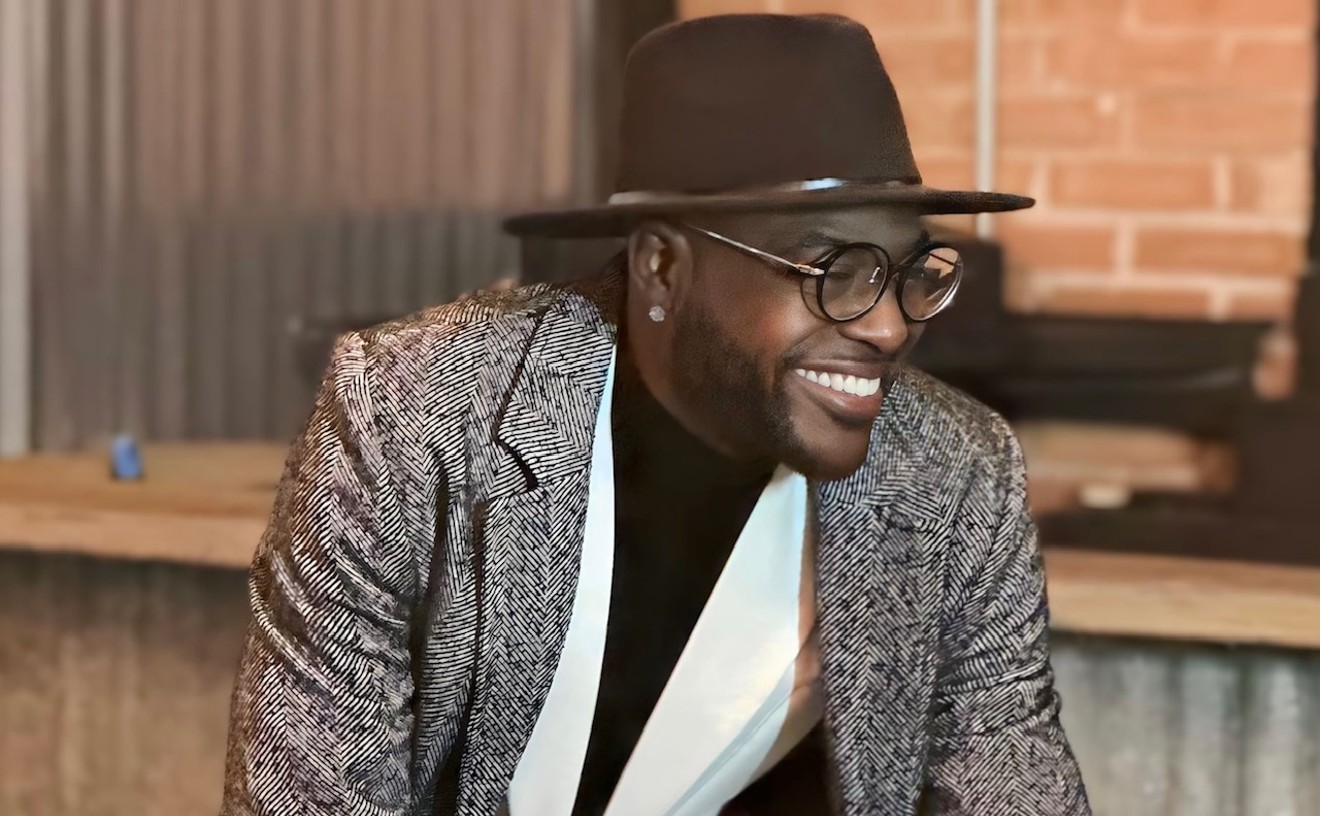People don't trust their instincts to the degree they might. How often I've stood at an opening and overheard a young woman say to her boyfriend, "Oh, I dunno, honey. What do you think?" or a guy say to his buddy, "That's just too weird for me to figure out." While art's primary objective is to elicit a visceral responses from a viewer, often in a very universal, instinctive manner, art's own pretentious legacy and all the keepers of that legacy (a.k.a.: critics, dealers, collectors) manage to make many people lack confidence in their own response. They believe that without a master's degree in art theory or a spouse who sculpts, their gut reaction to artwork is rendered moot. Not so.
All it really takes to look at art is some time, some quiet, and perhaps a healthy discussion with the person next to you. You know how you feel about it. Don't let Time's Robert Hughes tell you. (Though if you spot him at an opening, he'd be an excellent candidate for that discussion.) I know just as many art experts who hate Francis Bacon's paintings as love them -- art's subjectivity is no myth. If you want to know more about the artist before judging the work, fine, but if you feel you have to know more about the artist before judging the work, then the piece is failing. A work of visual art shouldn't have to come with an attached biography to make its impact. And while study and discourse and long-term scrutiny lend sophistication to an art-going experience, I wonder how they twist your gut response into a messy knot.
One current show presents a ripe opportunity for both amateur and veteran viewers to hone their art chops. The Dallas Visual Art Center's Annual Critic's Exhibition, in its 16th year, has hit its stride and is one of the most engaging emerging-artist shows in the region. I'd be as willing to take my non-arty brother to this exhibit as I would a museum curator, for several reasons. First, the art is well made and presented, and it's diverse enough for a multifaceted response. Also, most of these artists are so new that their work comes without preconceived notions or information. Plus, there are a few pieces that warrant the question Does this even work? and a few more that warrant the intriguing follow-up So why doesn't it?
Because the DVAC is constructing a new building and is currently homeless, this year's Critic's Choice is housed in the African American Museum at Fair Park. A healthy-sized, respectfully lighted wing of the old deco building is dedicated to around 60 artists, one piece per person, from all over Texas. Sure, it's got your painting, your pastel, your printmaking, but it also showcases all manner of 3-D work in every conceivable material, making the show an excellent distillation of contemporary art's complexity. This year's critic (read: juror) is nationally noted artist James Surls, who picked his way through 1,000-plus entries before settling on the final. Some of the works are so strong that I wonder if the show didn't choose itself.
What disturbed me overall was likely a symptom of viewing so many new artists at once, and it led to a peripheral issue in the art-looking experience, an issue my non-arty brother wouldn't have to face. Thing is, so many of the works in this show reminded me straight-up of other contemporary artists' works. I saw Bacon; I saw Robert Rauschenberg; I saw David Salle. I even saw locals like Celia Eberle and Kate Budd, all done by relative rookies, and mostly done well. While I rechecked my response to them, I wondered which take was most valid: One, these newcomers are copping, stealing, lifting -- being patently unoriginal and therefore risking automatic rejection. Or two, the current language of art lends itself to synchronized expression, e.g., Jane Helslander isn't familiar with Kate Budd's work, they both just express gender conflicts the same way. And maybe Bonnie Young hasn't studied Bacon, so I must excuse the similarities and judge her streaky painting on its own merits. For all I know, Helslander hangs out with Budd, or Budd copped from her, but should I have to make three phone calls (two artists, one witness) before knowing what to think of Helslander's piece?
The best (non-copped) works are strong for inarguable reasons. Gerard Huber's portrait of a nude woman standing before her Egyptian stone counterpart is one of the best examples of hyper-realism I've seen in a while, with plenty of pensive sociopolitical conflict thrown in for measure; James Michael Starr (yes, I already know his work) haunts and beautifies with his spare, ethereal collage method. Two stunning abstract paintings, one large by Juvenal Reis, one smaller by Sylvia Betts, pack all the expression and bile and hope an artist can bundle into such dense and wrenching shapes and colors. The list of successes goes on: Merry Fuhrer overcomes her oddly juxtaposed name with a fold-out comic about the horrors of driving on the interstate; Mary Lynn Devereux's seven-layered glass house, with its embedded cross and delicate ladder, is wonderfully wise and serene. These don't look like other artists' work, not even the abstract paintings -- which most art hounds know can evoke copycat responses without even trying.
Another healthy handful of pieces work well, and like them or not, many would agree that some talent is behind them. But some raise the prickly issue of looking both great and derivative; they would work better if you hadn't seen them before. The most connective thread of familiarity was the woman's aesthetic. A mere glance and I'd know the piece was by a woman -- a smart, cynical woman who needed to express women's issues, blah, blah, blah. I've never seen so much Kiki Smith and Louise Bourgeois in my life, not even at a Kiki Smith show.
The aforementioned Helslander combines tape, electrical wire, and paint to create a low floor sculpture so womb-like and stark and evocative of Budd's piece in an Arlington show two years back that upon approach I was pretty sure the name card would read "Budd, 1997." Lily Hanson puts a blue plaster tit-genital in a gauze frame, and Jill Judson Singletary makes a doll's bed out of rusty barbed wire, and I'm wondering which edition of the Bourgeois catalog these artists keep on their bedside tables.
One piece that nearly transcends its own creepy-gorgeous, "womyn"-art legacy is Katherine Taylor's "Object of Waste," a clay piece that looks like smooth, heavy bronze. Its flaccid, disembodied breasts sag on a table, anchored by a loose trail of spinal column. The lines are perfect -- totally pristine yet breathing and organic. A sad, abandoned chunk of gender. I'd guess breast cancer was in its emotional foundation, but the cliché makes me wince.
The women aren't the only lifters. Jim Bowman attempts Rauschenberg's pop-meets-gay-meets-3D-ramble with his "Glass Garden with Cat in the Hat Hat." But the glass is an incoherent jumble except for the multiple phalluses and bloody sword and striped top hat -- anyone for literal? Jonathan Miller does Rauschenberg a bit better, what with his silk-screen collage of fish and such, though Rauschenberg's canny sense of multilevel, optical entertainment is missing.
The harder I looked, the more I saw the homage-cum-copies. Heather Murray has her way with Salle, circa 1984, albeit with an unprovocative flatness, and Kay Ford Ellis does a shrill Kiki with a cylinder of dripping mesh and some orange crochet flounces denoting erogenous and fecund zones. These works made Lynda Bottom's large aluminum drawing of flora and fauna -- a cheerful, satisfying piece of meticulous decoration -- look downright pioneering.
Still, I came away in a positive mood -- these artists are certainly capable craftsmen, and they have intelligent, universal concerns. Perhaps with time, they'll cultivate their own individual style. I'm still wondering how to respond to them right now, if at all. Maybe in the name of continuity and homage, I should suspend judgment, let these artists find their voice by practicing other voices (after all, most rock bands learn to play and write by covering other groups' songs). Fair enough -- just as long as these artists don't linger forever on others' terrain. Striking out for new aesthetic land is nearly a fool's journey -- as with music, it's hard to believe there's anything left to discover or cultivate.
My non-art brother wouldn't lose sleep over this issue. He could study Taylor's spinal-bound boobs and simply say -- "Hey, that's amazing. It makes me uncomfortable, and I'm not sure I'd want it in my house, but I appreciate where it's coming from." I envy that.










